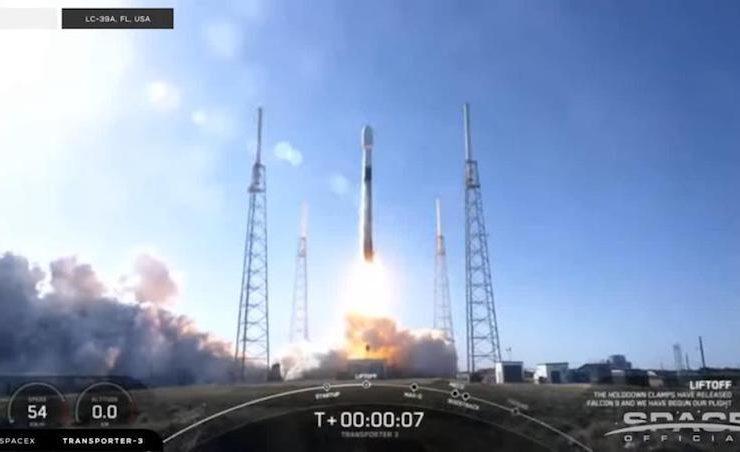The Dubai Electricity and Water Authority (DEWA) on Thursday launched the DEWA-SAT 1 nanosatellite in collaboration with NanoAvionics.
It therefore became the world’s first utility to use a nanosatellite to improve the maintenance and planning of electricity and water networks, according to Dubai Media Office.
DEWA-SAT 1 was launched on a SpaceX Falcon 9 rocket from Cape Canaveral Space Launch Complex (SLC-40) in Florida.
The nanosatellite was designed and developed at DEWA’s R&D Centre in the Mohammed bin Rashid Al Maktoum Solar Park.
Saeed Mohammed Al Tayer, managing director and CEO of DEWA, noted that DEWA will launch another U6 nanosatellite later this year to promote its ability to effectively monitor, manage, and maintain its electricity and water networks.
Al Tayer added that DEWA-SAT 1 uses LoRa IoT communication technology, which is a new wireless protocol designed for long-range communications that consumes less energy, to expand the coverage of the existing terrestrial communication network.

Using satellite communications, IoT, and AI is expected to improve the efficiency and effectiveness of DEWA’s operations and support digitising energy networks, water distribution and transmission networks. It also enables the integration of IoT data using DEWA’s private cloud.
The Space-D programme was launched by Sheikh Mohammed bin Rashid Al Maktoum, Vice President and Prime Minister of the UAE and Ruler of Dubai, last January.
Read: Sheikh Mohammed launches DEWA’s space programme and Hatta tourism projects
Waleed Bin Salman, executive vice president of business development and excellence at DEWA, said that DEWA’s Space-D programme includes launching the nanosatellite constellation developed by Emiratis at DEWA’s R&D Centre at the Mohammed bin Rashid Al Maktoum Solar Park.
The system features a ground station at the solar park as well as IoT and AI technologies to support ground communication transmission stations in electricity and water networks.
By deploying this infrastructure, DEWA seeks to increase the efficiency and effectiveness of its planning and operations, and enhance preventive maintenance at its production, transmission, distribution divisions as well as its smart grids, and electric vehicle charging stations.
Multi-spectrum, high-resolution thermal imaging devices such as those used onboard spacecraft, specifically designed for use in electricity and water networks, will be deployed to detect thermal fingerprints in high voltage transmission lines, substations, buildings and solar power stations.
Currently, DEWA’s installed capacity has reached 13,200 MW of electricity and 490 MIGD of water.









